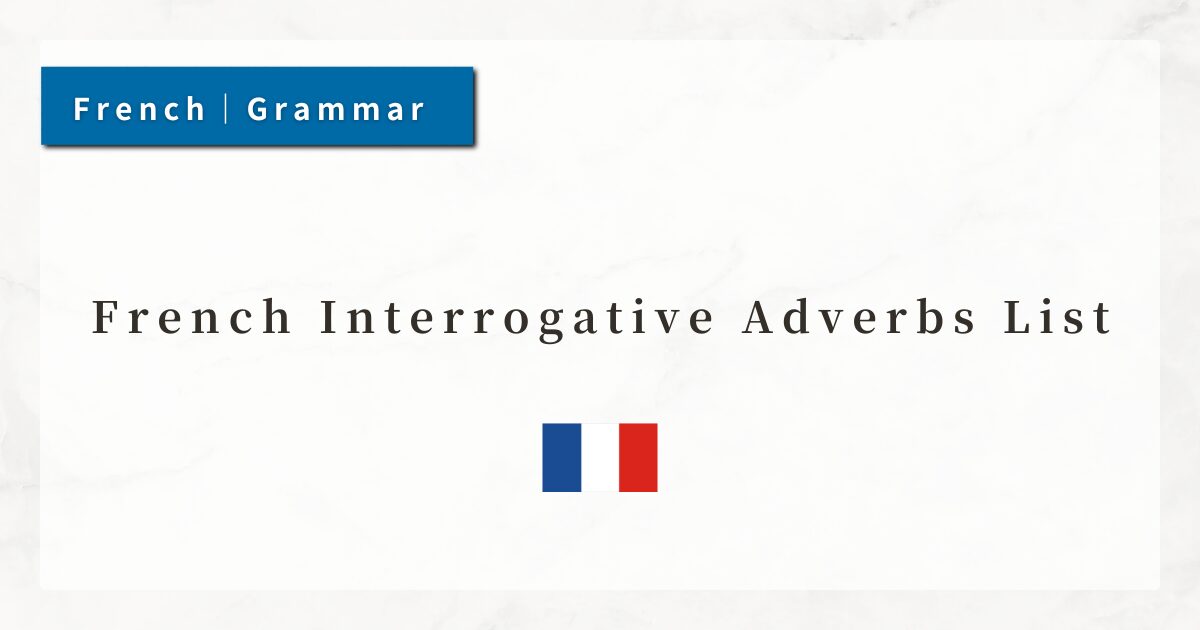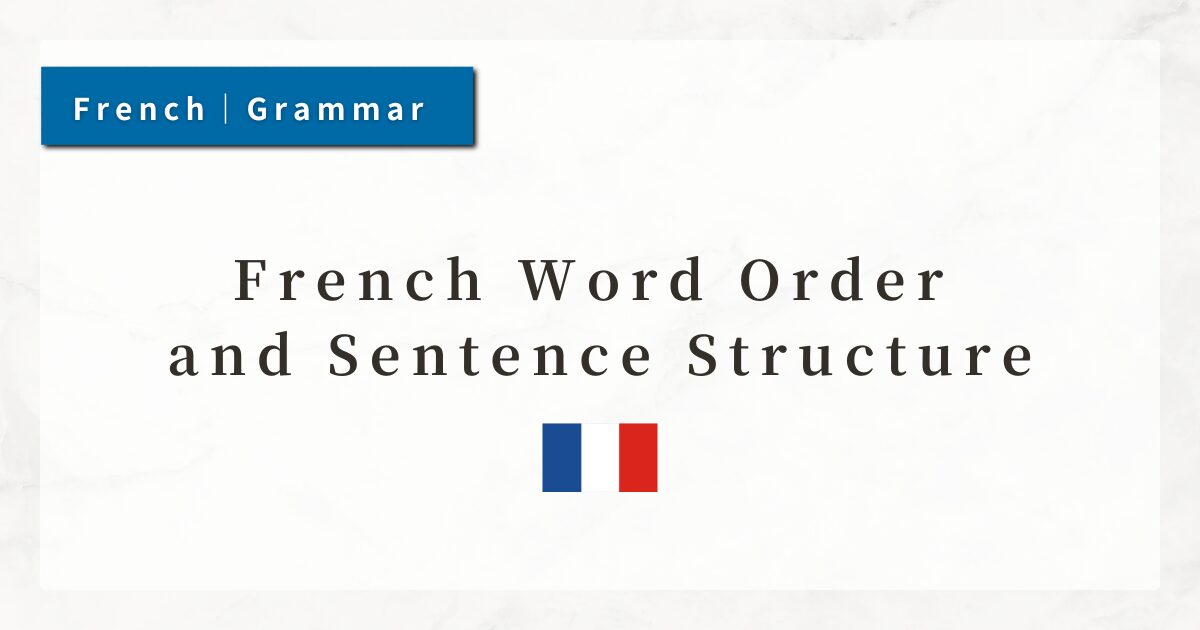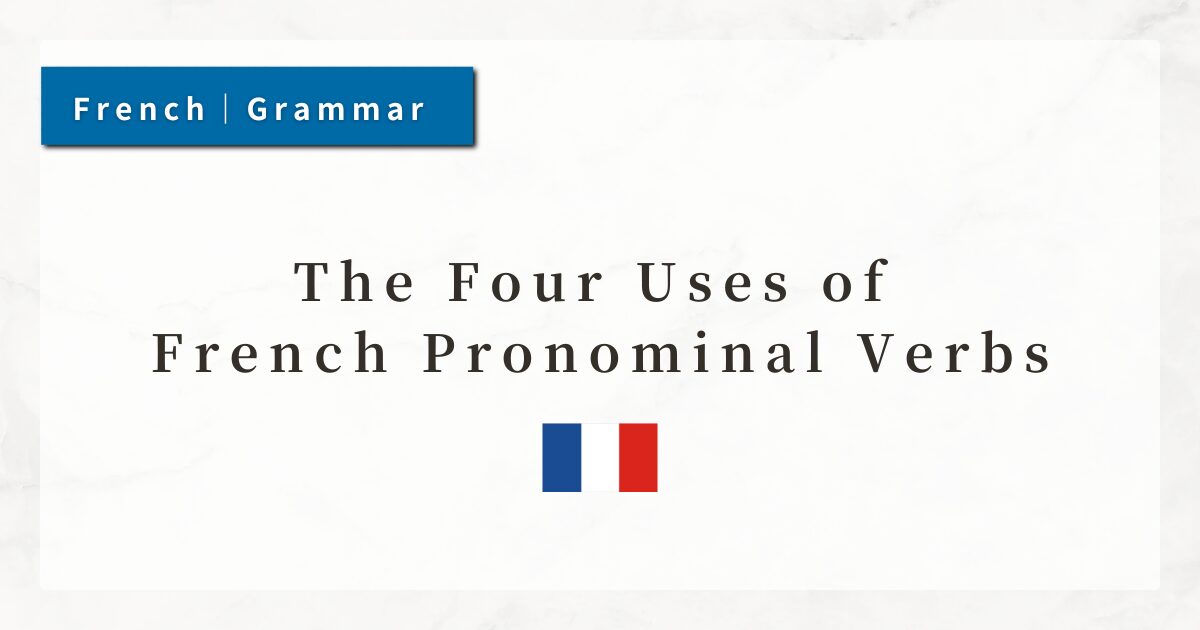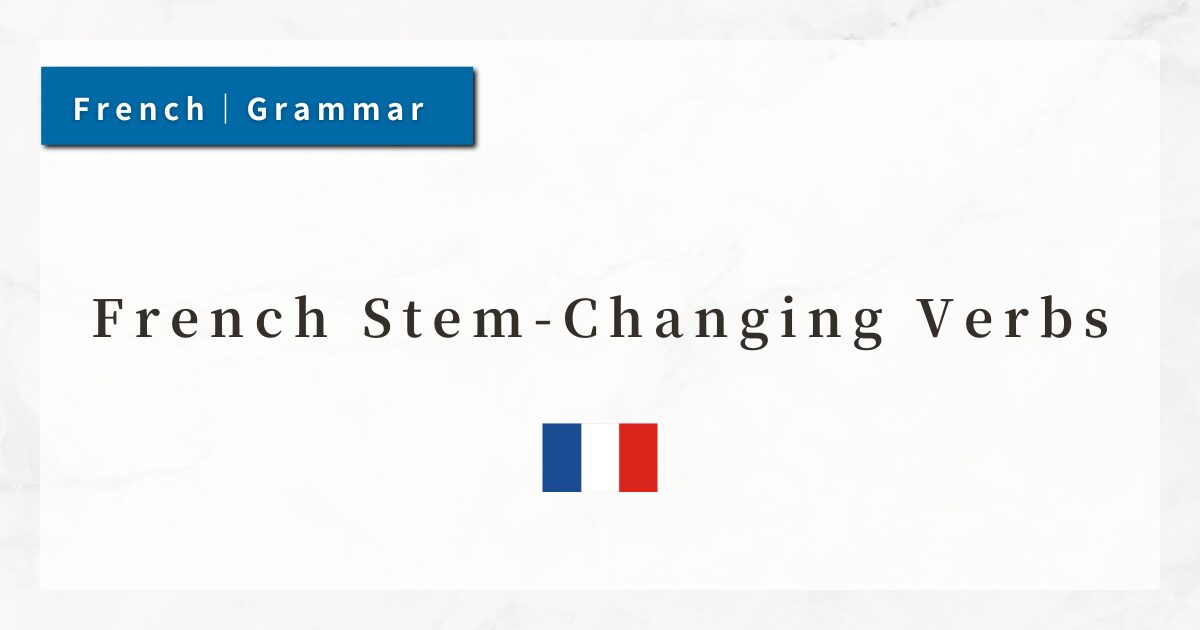#49 French Interrogative Adverbs List | Meanings, Usage, and Example Sentences

In French, words such as “when?”, “where?”, “why?”, and “how?” are expressed through interrogative adverbs.
These adverbs are indispensable for forming questions and occur frequently in everyday conversation.
In this lesson, I will explain the most common interrogative adverbs, how to use them, their position within a sentence, and the rules of word order.
1. The Basics of Interrogative Adverbs
An interrogative adverb is used to ask about additional information concerning an action or state (time, place, manner, reason, quantity, etc.).
For example: “Is he coming?” is a yes/no question. “When is he coming?” or “Why is he coming?” require an interrogative adverb.
Below is a list of common interrogative adverbs with their meanings and examples.
Common Interrogative Adverbs
| Interrogative Adverb | Meaning | Example of Use |
|---|---|---|
| Quand | when | Quand est-ce que tu arrives ? (When are you arriving?) |
| Où | where | Où est la gare ? (Where is the station?) |
| Pourquoi | why | Pourquoi tu ris ? (Why are you laughing?) |
| Comment | how | Comment ça marche ? (How does this work?) |
| Combien | how much / how many | Combien ça coûte ? (How much does it cost?) |
All of these adverbs are normally placed at the beginning of the sentence, followed by either the “est-ce que” construction or an inversion structure.
2. The est-ce que Construction
The structure “interrogative adverb + est-ce que + subject + verb…?” is the most widely used question form in French.
- Quand est-ce que tu pars ?
(When are you leaving?) - Pourquoi est-ce qu’il pleure ?
(Why is he crying?) - Comment est-ce que ça fonctionne ?
(How does it work?)
This construction is straightforward, as word order does not change, and it is widely used in both spoken and written French.
3. Inversion Structure
In inversion, the subject and verb are inverted after the interrogative adverb:
“interrogative adverb + verb + subject.”
- Où est le restaurant ?
(Where is the restaurant?) - Comment fonctionne cette machine ?
(How does this machine work?)
This form is more formal and commonly used in written or formal contexts. The verb follows immediately after the interrogative adverb.
4. Colloquial Structure
In informal conversation, the structure “interrogative adverb + subject + verb” is often used without inversion. Intonation indicates that it is a question.
- Pourquoi tu es en retard ?
(Why are you late?) - Comment tu fais ça ?
(How do you do that?)
This form is typically used in casual speech among friends or family.
5. Notes on the Use of Combien
The interrogative adverb Combien is used for asking about quantity or amount: how much, how many.
It can stand alone or be followed by “de + noun” for greater specificity.
- Combien ça coûte ?
(How much does this cost?) - Combien de personnes sont là ?
(How many people are there?) - Combien de temps est-ce que tu as ?
(How much time do you have?)
When used in the form “Combien de + noun,” the verb must agree in number with the noun.
6. Difference Between Interrogative Adverbs and Interrogative Pronouns
It is easy to confuse interrogative adverbs with interrogative pronouns. The distinction is as follows:
| Type | Target of the Question | Example | Meaning |
|---|---|---|---|
| Interrogative Adverb | Situation, reason, manner, etc. | Pourquoi ? | Why? |
| Interrogative Pronoun | Person or thing itself | Qui ? / Que ? | Who? / What? |
For instance:
- Qui est là ?
(Who is there?)
→ asks about the person. - Pourquoi est-il là ?
(Why is he there?)
→ asks about the reason or situation.
7. Summary
- Interrogative adverbs are used to ask about time, place, reason, manner, or quantity.
- There are three main word order patterns:
1. est-ce que construction (standard, polite)
2. inversion (formal, literary)
3. colloquial structure (casual speech) - “Combien” often appears with “de + noun” to specify what is being asked about.
- Unlike interrogative pronouns, interrogative adverbs ask about circumstances surrounding an action, not the person or object itself.




